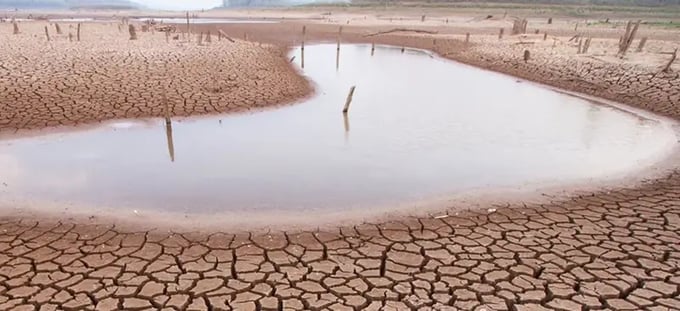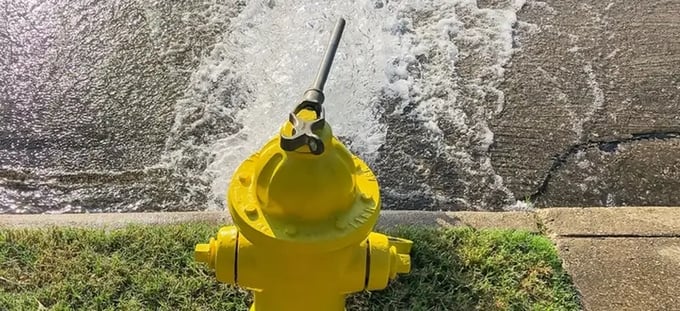2022 was the year when water cost and water scarcity moved from a regional issue to a global topic. Research cemented, what was obvious to all, that the world has become much drier than in the past. In fact, 2000 - 2021 was the driest 22-year period since at least 800CE, over 1200 years ago.
In 2023 we will think differently about water because it will become more expensive, more scarce, and more regulated creating an opportunity for efficiency and profit. As LAIIER’s core use cases all focus on water, we spent time reflecting and projecting on what will happen in the water industry over the next 12 months.

2022 was a catalyst for change in the water industry
- Pakistan suffered devastating monsoon floods, submerging one-third of the country and killing over 1,700.
- The persistent impact of La Niña, now in its third consecutive year, has exacerbated the already dire situation in Somalia, leading to the displacement of 8M individuals and placing parts of the nation on the brink of famine for the second time in this century.
- Low water on the Rhine & Mississippi rivers halted barge traffic, driving up shipping costs.
- The large reservoirs on the Colorado River have continued to decrease in size due to a warming climate and inadequate conservation efforts.
- European glaciers lost ice in the summer heat, leading to water shortage in over 100 French towns, prompting authorities to truck in water.
- French regulators suspended thermal pollution standards for rivers in August, enabling nuclear plants to heat streams beyond limits.
- Due to the unprecedented heat wave and energy shortages in Sichuan, China, several major factories, including Toyota and Foxconn, have temporarily shut down operations.
- The Zambezi River Authority ordered Kariba Dam operators to halt hydropower generation until Jan. 2023, worsening electricity shortages in Zimbabwe and Zambia. The dam's reservoir, the world's largest, is only 3% full.
- Lake Mead, a key water source in the west US, is predicted to drop 20+ feet by 2023, at 22% of full capacity.
- Jackson, Mississippi's water system failed in Aug. due to heavy rains, leaving 180,000 people without running water for a week.
- Russian forces attacked Ukraine's infrastructure, leaving millions of civilians in Kyiv and Kherson without essential utilities. Legal experts deemed the attacks a breach of international law.

Water prices will increase in 2023
The cost of residential water is rising due to various factors such as droughts, investment in infrastructure, and increased expenses. Consumers and businesses will have to pay more for each unit of water they use or waste.
According to a recent analysis, San Diego residents can expect a 17.6% increase in their water rates over the next two years. This increase is necessary to fund the city's pure water sewage recycling system and to keep up with the rising costs of importing water and replacing aging pipes. These increases will be well above the rate of inflation.
In the UK, the Water Retailer Council is pushing for a 55% increase in water rates for small companies that make up 85% of the market. With over 42% of the US currently experiencing a moderate or exceptional drought, the cost of water and the rates we pay for it is likely to keep increasing in 2023.

Persistent droughts in 2023 will precipitate social changes
In 2023, water scarcity will bring significant changes to our daily lives, from the shrinking Great Salt Lake to corpses found in receding Lake Mead. Water restrictions will likely dominate public discussion and media, surpassing inflation and cost of living as a major concern.
Climate change is causing water scarcity and more frequent and severe droughts, which are negatively impacting agricultural production, food supplies, and economies. According to the World Food Programme, the number of people affected by food shortages has more than doubled since 2019, reaching 345MM, or 4% of the world population.
Municipalities will continue to police water usage, likely with even more attention than in 2022. It is likely that we will see more high-profile water police stories focused on celebrities or businesses not following guidelines, as happened last year.
Water and excessive residential consumption like a vibrant garden in a desert landscape or an outdoor pool will increasingly be viewed as a sign of wealth.

Water waste and leaks become a critical topic in 2023
Municipalities, businesses and individuals will be held to account for their water use and waste in 2023. This pressure is likely to hit municipalities first.
Federal officials have warned states to reduce water usage by up to 4 million acre-feet/ year or face mandatory cutbacks. These actions in 2023 could drastically affect 40M people, 5M acres of farmland, and water policy across the US. A recent paper by Amanda Rupiper et al. found that water utilities in the United States lose approximately 17% of their water to leaks yearly.
A global estimate shows that 30% of water, or 346M cubic meters per day, is lost before metering and is referred to as non-revenue water. The Metropolitan Water District of Southern California is the largest treated water supplier in the US, serving 19M people.
In December 2022, the District declared a drought emergency, which may require mandatory water restrictions. This would affect all 19 million people served by the Water District. Water networks emit 135M tons of CO2 annually. Reducing this by 30% by avoiding leaks would significantly reduce the carbon footprint of our water infrastructure.
The World Economic Forum says investing in technology to detect leaks in water systems will pay for itself by reducing waste, saving energy costs, and avoiding CO2 penalties.
Businesses and homeowners will be under pressure too, with mandatory cutbacks on water consumption likely. But these end consumers of water also face significant, and implemented opportunities for efficiency.
According to the EPA, fixing easily correctable household water leaks can save homeowners up to 10% on their water bills. To educate the public, the EPA will hold the annual ‘Fix a Leak Week’ on 20-26 March 2023. Technologies like LAIIER’s Severn Water Leak Detector will be critical in helping businesses save water, improve operational efficiency, and reduce costs.

2023 will be the strongest year yet for investment in water tech
Though 2022 was full of challenges, there are reasons to be optimistic in 2023, specifically regarding capital flowing towards water waste, supply, and quality improvements. The U.S. Environmental Protection Agency started distributing the US$4B allocated for water systems as part of the Infrastructure Investment and Jobs Act.
Newark, New Jersey, finished removing more than 23,000 lead service lines in the city in less than three years. Benton Harbor, Michigan, another city with a high concentration of African American residents and high-profile lead contamination, has nearly completed its lead pipe removal, with only a few dozen remaining in the ground.
In addition to government initiatives, the private sector offers numerous opportunities for economic growth and water efficiency improvements. For example, the Chinese semiconductor industry spends US$1B per year on water use, with the Taiwan Semiconductor Manufacturing Company alone using 150,000 tons per day.
The industry could save over US$100M each year through water reduction, reuse, and recycling. Global freshwater dependence is essential for life and the economy.
Given the clear water crisis that the world is facing, it's surprising that more capital hasn’t been invested to take advantage of the opportunity.
Investment in water tech has lagged behind other areas of climate tech. Only US$470M of the US$54B invested in climate tech in 2021 was allocated for water. But 2023 may be a turning point for investment in water-related risks as investors recognize the opportunities and the impact on their portfolios.
One very prominent exception is water-focused fund Burnt Island Ventures, investors in LAIIER’s Seed round, in July of 2022.
The strongest tailwind for companies like LAIIER, working in the water industry, is the unfortunate truth of a changing planet. As SP Global cites in its 16 January 2023 report: “Climate change will continue to drive drought and water scarcity, sharpening the focus on water-related risks.”
This should hopefully have the dual effect of increasing investment into this critical industry, while also incentivizing existing stakeholders to mitigate waste and improve efficiency. We remain hopeful that in March, the UN’s dedicated water conference in almost 50 years will be a catalyst for action, investment, and re-invention in this critical space.
You can learn more about our technology here.